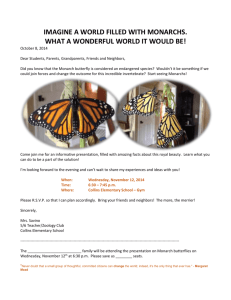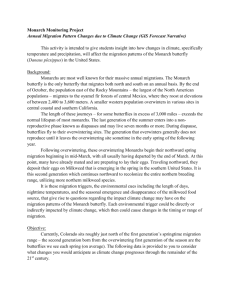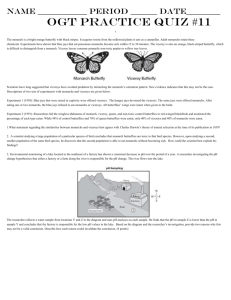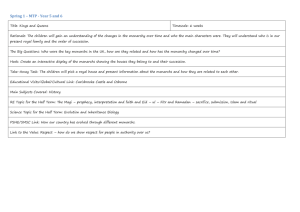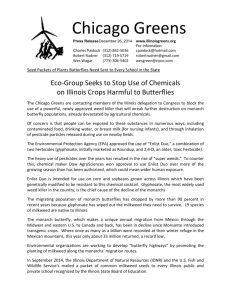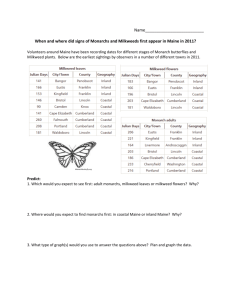Tagging and Migration Monarchs
advertisement
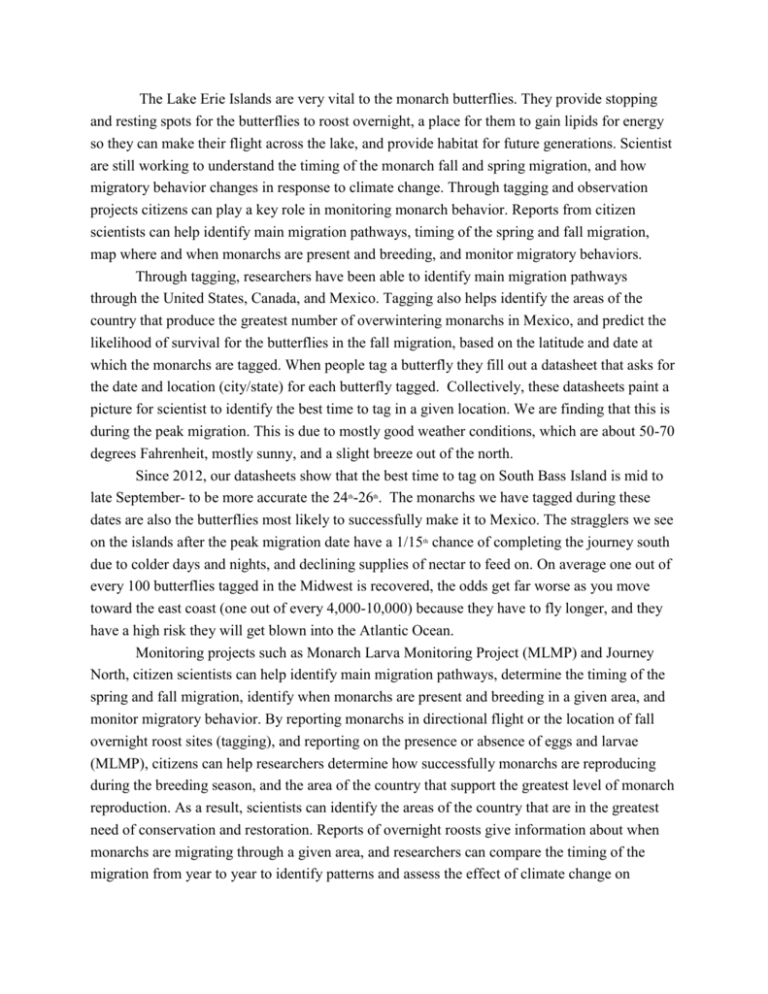
The Lake Erie Islands are very vital to the monarch butterflies. They provide stopping and resting spots for the butterflies to roost overnight, a place for them to gain lipids for energy so they can make their flight across the lake, and provide habitat for future generations. Scientist are still working to understand the timing of the monarch fall and spring migration, and how migratory behavior changes in response to climate change. Through tagging and observation projects citizens can play a key role in monitoring monarch behavior. Reports from citizen scientists can help identify main migration pathways, timing of the spring and fall migration, map where and when monarchs are present and breeding, and monitor migratory behaviors. Through tagging, researchers have been able to identify main migration pathways through the United States, Canada, and Mexico. Tagging also helps identify the areas of the country that produce the greatest number of overwintering monarchs in Mexico, and predict the likelihood of survival for the butterflies in the fall migration, based on the latitude and date at which the monarchs are tagged. When people tag a butterfly they fill out a datasheet that asks for the date and location (city/state) for each butterfly tagged. Collectively, these datasheets paint a picture for scientist to identify the best time to tag in a given location. We are finding that this is during the peak migration. This is due to mostly good weather conditions, which are about 50-70 degrees Fahrenheit, mostly sunny, and a slight breeze out of the north. Since 2012, our datasheets show that the best time to tag on South Bass Island is mid to late September- to be more accurate the 24th-26th. The monarchs we have tagged during these dates are also the butterflies most likely to successfully make it to Mexico. The stragglers we see on the islands after the peak migration date have a 1/15th chance of completing the journey south due to colder days and nights, and declining supplies of nectar to feed on. On average one out of every 100 butterflies tagged in the Midwest is recovered, the odds get far worse as you move toward the east coast (one out of every 4,000-10,000) because they have to fly longer, and they have a high risk they will get blown into the Atlantic Ocean. Monitoring projects such as Monarch Larva Monitoring Project (MLMP) and Journey North, citizen scientists can help identify main migration pathways, determine the timing of the spring and fall migration, identify when monarchs are present and breeding in a given area, and monitor migratory behavior. By reporting monarchs in directional flight or the location of fall overnight roost sites (tagging), and reporting on the presence or absence of eggs and larvae (MLMP), citizens can help researchers determine how successfully monarchs are reproducing during the breeding season, and the area of the country that support the greatest level of monarch reproduction. As a result, scientists can identify the areas of the country that are in the greatest need of conservation and restoration. Reports of overnight roosts give information about when monarchs are migrating through a given area, and researchers can compare the timing of the migration from year to year to identify patterns and assess the effect of climate change on migratory behavior. Knowing the number of roosts and the number of monarchs reported in each roost can help researchers predict the size of the overwintering population and identify key migratory sites that should be protected. Monitoring on South Bass Island shows that the island provides critical habitats for the monarchs during the spring and fall migrations as well as the breeding season. Our data shows that the South Bass Lighthouse property and the wildflower field owned by the Duggans is the most favored and productive site on the island. This is because the site is in a good location and has the plants that support the monarchs’ needs for breeding, roosting, and for getting nectar. The certified butterfly garden (Waystation) at the lighthouse has an abundance of healthy milkweed plants needed for successful breeding in the spring and summer. The larva (caterpillars) only feed on milkweed plants, without milkweed monarchs are unable to produce the successive generations that culminate in the migration each fall. Duggans’ wildflower field is the best place for the butterflies to “fuel-up” on nectar for energy before they make their flight across the lake to the mainland. Without this large source of food for the adults they would not have the energy needed to cross the lake. The maple and hackberry trees on both the lighthouse and Duggans property provide a specific microclimate that is warmer; therefore this is where we are seeing thousands of monarchs roosting overnight during the peak migration. This southwest location provides milkweeds, nectar sources, and shelter needed to sustain the monarch butterflies as they migrate. Other sites we monitor are the Lake Erie Islands Nature & Wildlife Center (LEINWC) Waystation and Gibraltar Island. Both sites provide great breeding habitat due to the abundant amount of healthy milkweed plants for the larva. The Great Lakes are one of the first hurdles the butterflies face as they migrate from Canada south to Mexico in the fall. Monarchs flying over open water cannot glide in thermals; they need to use powered flight. The constant flapping will diminish their lipid reserves and can weaken them substantially over long distances. Without a place to refuel (nectar), monarchs will have a lower chance of making it to Mexico. By providing and conserving habitats in the Lake Erie Islands for the butterflies to rest, eat, and reproduce raises the survival and overwintering rates.
